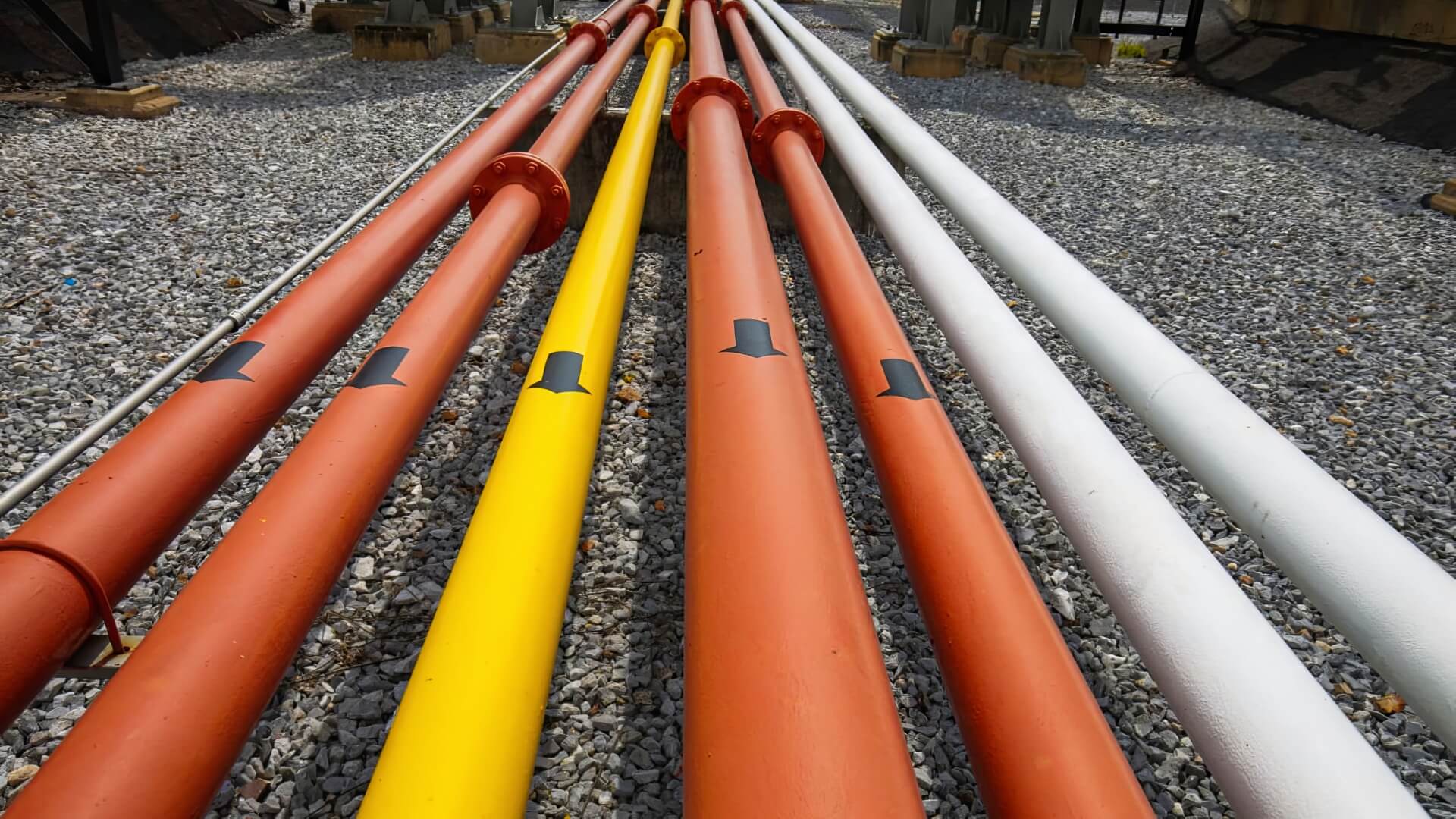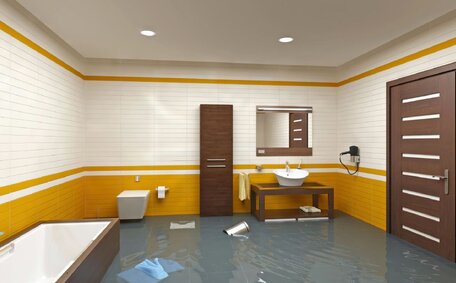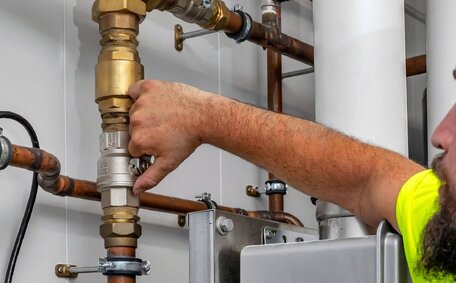Identifying Common Minor Plumbing Issues
Some of the most common minor plumbing issues encountered in homes include:
- Clogged drains - Combinations of hair, soap accumulations, and various debris can congregate inside drain pipes, which may result in a slow drain or complete blockage.
- Dripping faucets - Worn washers or flush valve seats allow water to slowly drip from faucets, which can lead to increased water bills and resource wastage.
- Running toilets - A glitch in the fill valve mechanism can occur when the flapper fails to seal properly, this leads to a constant flow of water into the toilet bowl, resulting in a running toilet.
- Low water pressure - Build up inside pipes, issues with the toilet tank water level or the toilet float, or problems with the home’s water pressure regulator can all contribute to reduced water flow.
Fortunately, many plumbing concerns, like how to fix slow drains, can often be resolved with straightforward techniques, Simple fixes, such as using a plunger to remove blockages, swapping out worn valve toilet parts, or sprucing up faucet aerators, can get your plumbing in top shape once again. We encourage homeowners to first attempt DIY troubleshooting before considering more extensive repairs.
Clearing Clogs Without Chemicals
For effective, eco-friendly drain cleaning techniques, ensure you refer to our guide on natural methods that protect both your plumbing and the environment.
- Boiling water - Pouring boiling water into the drain may dissolve grease clogs, offering a quick remedy for slow drains.
- Baking soda and vinegar - create a mixture of 1/2 cup baking soda with 1 cup vinegar and pour it down the drain to clean the jet holes. Cover and let sit 5-10 minutes before rinsing with hot water.
- Plunger - Try vigorously plunging the drain 10-15 times to help dislodge clogs.
- Use a wire hanger or a zip-it tool to extract hair and other debris by reshaping the hanger into a hook and carefully guiding it into your drain. Zip-it tools work similarly.
- Install a drain cover to catch debris in your kitchen sink, preventing clogs and protecting your garbage disposal – avoid grease and use strainers.
It’s prudent to call professional help for serious clogs if these DIY methods don’t unclog your drain. Avoid chemical drain cleaners which can cause exacerbation of your problem by corroding pipes.
Using a Plunger
Using a plunger is a practical DIY approach to clearing sink and toilet clogs. To ensure smooth flushing, consider these steps:
- To clear a blockage and free up water flow, place the plunger firmly over the flush valve opening to form a tight seal.
- When tackling toilet clogs, vigilance is key to detect any signs that suggest the blockage has diminished; otherwise, the toilet still demands attention. For the toilet bowl, it’s wise to avoid adding extra water and instead check out our tips for effective plunging techniques.
- Address a flushing toilet issue by plunging several times, exerting force on the downstroke to dislodge clogs into the drain line.
- When plunging a toilet, alternately cover and uncover the overflow tube to force air up into the system.
- Verify water evacuation after plunging to ensure success. Persist until the clog is cleared.
Exercise patience and persistence when plunging. A firm seal and forceful action can clear stubborn blockages and improve water flow.
Troubleshooting Leaky Faucets
A leaky faucet can seem like a minor annoyance, but it’s crucial to address it promptly, as it can lead to considerable water waste. Unearthing the cause is the primary thing should you tackle when there’s no water emerging from your tap.
Checking for Worn Washers and O-Rings
Worn rubber washers or O-rings, sealing the faucet interior, are typical causes of leaks. Examine them for cracking, looseness, or misalignment. If they’re intact, proceed to inspect the O-rings.
Tightening Faucet Connections
Before you start, use an adjustable wrench to ensure a solid grip on the connections. Tighten the packing nut at the point where the faucet stem meets supply lines.
Also secure firmly the mounting nuts that affix the faucet base to your house’s sink. Often this compression is enough to stop minor leaks.
Replacing Washers and O-Rings
Should the dripping continue, there’s an evident need replace compromised washers or O-rings.
Initiate the steps to fix your faucet by turning off your water supply lines and alleviating any built-up pressure. Use food-grade lubricant on rubber pieces during reassembly. Be patient when learning how fix the connections without overtightening.
Fixing Drips and Tightening Connections
To fix a dripping faucet, begin by dismantling it to check the internal components. This requires shutting off the main water lines first. Gently open the faucet to relieve any internal pressure before taking things apart using a basin wrench and screwdriver.
First, inspect rubber washers and O-rings for any signs of damage. Replace any worn washers and lubricate O-rings during reassembly. Next, assess the metal valve seats inside the faucet for any signs of deterioration.
Use emery cloth or metal file to smooth any rough valve seat surfaces, then replace the washers and O-rings. Ensure that the replacement parts match the correct size and are aligned correctly before reassembly.
When putting a faucet back together take care not to overtighten connections at any joint. Tighten mounting nuts, supply line nuts and the packing nut in a criss cross pattern a little at a time until snug and leak free. Spray fixtures with lubricant and test the flow with warm water before returning to regular use.
Resetting Water Heaters
Resetting your hot water heater is a simple process that could restore the flow of hot water your household relies on. Start by checking your home’s circuit breaker to make sure power is still flowing properly to the heater.
Then locate the reset button, a crucial step to determine if the heater is functioning correctly, usually found near the cover panel or thermostat controls. firmly press the reset button, similarly to how you would engage a circuit breaker, if your water heater is not heating.
Frequent resets may signify underlying issues in your gas water heater’s components such as the thermostat or heating elements. Should you find the need to reset the heater frequently, seek professional heating help to diagnose the recurring disruptions. Annual maintenance checks are vital as they can pinpoint a problem can be rectified before escalating.
Always be sure to turn off power, this prevents your devices from damaging malfunctions when your water heater won’t heat as expected. And be mindful to circumvent scorching your fingers on the heater, taking time to let it cool down, so you can do the resetting safely.
Relighting the Pilot Light
To relight the pilot light safely, turn off the gas line and wait for any gas to clear. Follow the manufacturer’s guidelines throughout the process. Locate the pilot assembly along the bottom of the tank and ignite using a long match or pilot lighter.
Keep the pilot button pressed for 30-60 seconds after lighting. Then, cautiously turn the gas on, ensuring the pilot remains lit.
Exercise caution while handling your heating system, as understanding how to manage gas leaks can avert hazardous situations. Have a fire extinguisher on hand, work in a well ventilated area, and do not smoke or operate electrical devices during the process. If the pilot will not stay lit, call a qualified heating engineer to prevent a hazardous gas buildup inside the home.
Adjusting the Thermostat
Adjusting your water heater’s thermostat gives you control over the temperature, ensuring that the water temperature is both energy-efficient and comfortable. Locate the dial on the front of the tank or behind an access panel to efficiently regulate the hot water flowing out your taps. Use a flathead screwdriver to carefully turn the dial to your desired setting.
Running your water heater at a lower temperature reduces thermal strain and conserves energy. Hot water should still reach at least 49C to kill germs. After adjustments, conduct a trial by running cold water at the tap to ensure the temperature is suitable.
However, avoid setting the temperature too low to prevent bacterial growth in the hot water supply.
Be sure to check out our comprehensive insights on your thermostat to rule out a deteriorating heating element. A worn out element may no longer heat water to the set temperature for your central heating. We advise calling a plumber to test elements and thermostats if uncertain about their condition to keep your system running safely.
Increasing Water Pressure
There are a few easy ways to boost low water pressure in your home:
- Examine your bathroom and plumbing system for any leaks or blockages, as small issues can reduce pressure. Examine supply lines for leaks, remove any buildup, and ensure all valves are open.
- Clean the aerators on all taps. Unscrew these attachments at faucet tips and rinse out accumulated mineral debris to help clean your aerators effectively.
- Detach shower heads and run water to flush out mineral build-up directly in your shower drains and the shower arm conduits.
- Ensure all water-using appliances are off before testing flow at various taps. Pressure drops if excess demand strains the water system, and you may end up with a reduced flow throughout your residence.
- Consider the best way to enhance your home’s water pressure, such as upgrading to a booster pump, particularly if the pressure is low despite fixing minor issues. Contact a plumber to install.
Preventing low pressure starts with replacing older galvanised pipes over time, using water wisely, and scheduling annual maintenance checks to catch issues before they worsen.
When to Call a Professional Plumber
When DIY methods are inadequate for plumbing issues, seeking professional assistance becomes necessary. As a general guideline, we do call for professional assistance from Moorebank Plumbing if you encounter any of the following:
- Major leaks from leaking pipes causing extensive water damage
- Total blockages not cleared by plunging, augering, or natural agents
- Sewage backups or main line clogs
- No hot water due to problems beyond thermostat, reset button, or heating element issues
- Low water pressure despite clearing sediment buildup and leaks
- Gas leaks of any kind
- Recurring drainage or water flow issue your home can’t overcome despite repeated repairs
- Faulty valves, pipes, or connections in need of replacement
Our licenced and insured plumbers possess the expertise to accurately diagnose and repair your plumbing to full functionality. We utilise advanced equipment for tasks like pipe inspection and drain cleaning. And we stand behind our work with long-term warranties.
For fast, reliable service throughout Moorebank and surrounding suburbs, contact Moorebank Plumbing via email at [email protected], book an appointment through our website, or call 1300 349 338. Our 24/7 emergency plumbing assistance is available whenever you need it.






